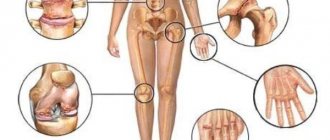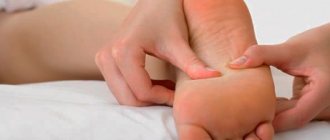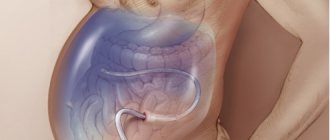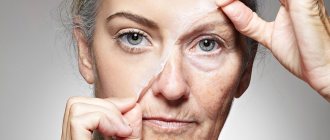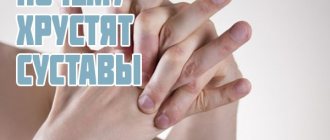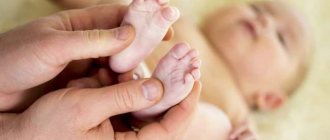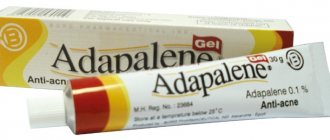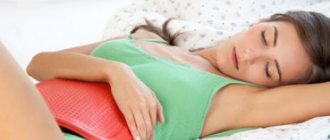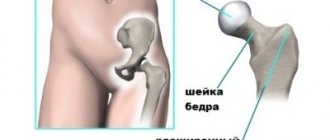Author of the article: Alexandra Burguta, obstetrician-gynecologist, higher medical education in the specialty “General Medicine”.
Rheumatoid arthritis is characterized by joint deformation, limited mobility and the development of contractures (immobility). To reduce symptoms, treatment includes exercise therapy, massage, swimming and physiotherapy. Therapeutic exercise for rheumatoid arthritis is aimed at strengthening ligaments and muscles, increasing range of motion in joints and slowing down pathological reactions.
Indications and contraindications for physical education
Exercise therapy is indicated for almost all patients. With significant restrictions, it is possible to perform breathing exercises or positional treatment (more details later in the article).
The main contraindications for prescribing physical education:
- exacerbation of rheumatoid arthritis, accompanied by severe pain and inflammation;
- systemic manifestations of the disease with serious damage to internal organs (vessels, kidneys, heart, lungs);
- some concomitant chronic pathologies (infections, cardiovascular and respiratory failure).
Basic methods and stages of classes
All approaches to physical therapy for rheumatoid arthritis can be divided into three groups:
Individual classes are ideal for patients with the most severe stage of the disease, as well as for rehabilitation after surgical treatment.
Group classes are the most accessible and rational approach. Patients are grouped according to the degree of mobility limitation.
During consultations, patients are taught techniques and exercises that they can use at home.
The main condition for exercise therapy in the treatment of rheumatoid arthritis is regularity of exercise and systematic increase in load. Exercises should not be performed with force: after proper physical activity, the patient should experience an increase in strength and a decrease in stiffness.
During inpatient treatment, three periods of rehabilitation can be distinguished:
Preparatory, when the doctor teaches the patient relaxation and breathing techniques. The duration of these exercises is about 10 minutes, the duration of training is 1–2 days.
During the main period, a basic set of exercises is performed. Classes take place daily for two weeks, each lasting about half an hour.
The final stage is carried out before discharge: the doctor teaches the patient exercises that he can do at home.
Yoga classes
Yoga therapy is often used, with the help of which all human muscles and joints are developed:
- the flexibility and plasticity of all muscles improves;
- muscles are strengthened;
- posture straightens in a short time;
- a person gets rid of nervous tension;
- metabolism is restored, a person’s weight is normalized;
- the amplitude of limb movements increases.
Yoga for rheumatoid arthritis can bring significant improvement. The exercise sets provide warm-up for all muscle groups and joints.
Correct use of exercises stops the destruction of the joint and promotes its restoration.
Breathing exercises, methods of complete relaxation, alternating loads, and stretching the ligaments are certainly useful in the manifestation of the disease. However, it is first recommended to obtain permission from your attending physician in order to determine which asanas will help and which are contraindicated.
When performing gymnastics, you should not overexert yourself and try to repeat all the movements of the trainer. It is advisable to perform activities according to the capabilities of your body.
Treatment by position
The “position” method of treating rheumatoid arthritis is also classified as exercise therapy and is used for severe lesions, when the patient is practically unable to move and is mainly in bed. It should also be carried out during periods of exacerbation of the disease.
What is its essence? The mattress on which the patient lies must be smooth and hard; it is advisable to use a special orthopedic one. The feet should have support; for this you can use either a moving headboard or a stand. You need to change your body position at least once an hour, if necessary with the help of another person.
If contractures begin to form, special splints (hard strips of plaster-impregnated bandages) are applied. If this is difficult to do, you can use rollers, weights and other devices. For example, if the hip joint is affected, a two-level mattress is made, allowing the leg to be extended in a relaxed position.
Hand exercises
In rheumatoid arthritis, the joints of the fingers are most often affected. Usually the hand takes on the characteristic appearance of a flipper, which leads to limited functionality and disability.
To reduce the strain rate it is advisable to:
- do not move your fingers towards the little finger;
- reduce the load on the fingertips;
- when at rest, ensure the correct position of the hand;
- write only with cone-shaped thickened pens;
- perform everyday activities correctly: trying to ensure that the axis of movement in the joints does not deviate to the side;
- at night, use orthoses - devices that limit mobility.
Here is one set of exercise therapy exercises for hand injuries:
Starting position: hands in front of you, next to each other. Alternately turn your palms up and down.
Place your hands on the table and raise and lower them first, and then only your fingers.
Stretch your hands clenched into fists forward. Rotate the brushes clockwise and counterclockwise.
Place your elbows on the table, clasp your palms, spread and bring your elbows together without lifting them from the surface.
Make up-down, left-right and circular movements with each finger in turn.
Touch each finger to the thumb, as if grasping something round.
Squeeze and unclench the soft ball in your hand, roll it over the surface.
Rotate your hands at the wrist joint, while trying to relax your palm.
Move your fingers along the stick from bottom to top.
Rub your palms together.
Each exercise should be performed 5–7 times, depending on the patient’s condition. There should be no pain during exercise.
Click on the picture to enlarge
Exercises for lesions of the shoulder girdle
Raise and lower your shoulders, make circular movements forward and backward.
Place your palms on your shoulders, alternately bringing your elbows forward.
Clasping your elbows with your palms, raise them and lower them.
Lying on your back, bend, raise and lower your straightened arms.
Place your hands on your belt and alternately place them behind your head.
During exercises, it is very important to maintain the correct breathing rhythm.
The above exercises are called dynamic, that is, related to the movement of the body in space. They are mainly aimed at restoring mobility and preventing contractures.
There is another type of load in which muscle work is not accompanied by movement of the limb, since it is fixed: isometric. Isometric exercise helps strengthen muscle fibers, even with severe mobility limitations. An example of such an exercise: lying on your back, press with straightened arms on the surface.
Exercises for arthritis patients[edit | edit code]
SHOULDERS[edit | edit code]
Raising your arms forward
Raise one or both arms forward (don't raise them above the water level yet), then up as far as possible. If one hand is too weak, help it with the other.
Raising your arms to the sides
Slowly raise both arms to the sides, palms down; hands remain in the water. Put your hands down.
Circular movements with hands
Raise both arms forward so that they are a few centimeters above the surface of the water. Straighten your elbows. Perform circular movements with your hands at first with a small amplitude, then gradually increasing it. Hands remain under water all the time. Reduce the amplitude again. Alternate the direction of movement in and out.
ELBOW[edit | edit code]
Bend your elbows:
Bend your arms and touch your thumbs to your shoulders. Relax your elbows and lower your arms.
Bend your elbows with your palms facing forward:
Extend your arms in front of you, palms facing forward, fingers up. Bend your elbows until your fingertips touch your shoulders. Relax and straighten your arms.
The following exercises can be done at home, or while sitting in a spa, or sitting or standing in a pool. In this case, make sure that the part of the body that is currently bearing the load is under water.
WRISTS AND FINGERS[edit | edit code]
Palm twists:
Extend your arms in front of you, palms up. Turn your palms down.
Wrist flexion:
Extend your arms in front of you, lift your hands up with your fingers and lower your fingers down.
HANDS AND FINGERS[edit | edit code]
"Ring":
Touch the tip of your thumb to each of the other fingers of the same hand in turn to make a ring. Repeat with the other hand. Can be performed with both hands at the same time.
Finger flexion:
Bend your fingers to form a loose fist, then straighten them.
Thumb rotation:
Move your thumbs in wide circles forward, then back.
ANKLE AND TOES[edit | edit code]
Ankle flexion:
Sit down, lean your back against the back of a chair, and slowly straighten one leg. Stretch your foot away from you so that your toes are pointing forward, then pull it towards you so that your toes are pointing up. Repeat with the other leg.
Finger flexion:
Tuck your right toes under your foot, then straighten them. Repeat with your left leg.
Circular movements of the foot:
Sit down, lean your back against the back of a chair, and slowly straighten one leg. Move your feet in large circles inward, then outward. Repeat with the other leg.
HIPS AND KNEES[edit | edit code]
Knee straightening:
While sitting with your back resting on the back of a chair, slowly lift one leg, straightening your knee. Hold for 3 seconds.
Knee Raise:
Standing with your left side to the wall or side of the pool, use your left hand to help you maintain your balance. Bend your right knee and lift your leg until your thigh is parallel to the floor or surface of the water. Straighten your knee, then bend it again. Lower your leg. Repeat with the other leg.
Leg abduction in a sitting position:
Sitting on the edge of a chair, straighten one knee, slowly move your leg to the side, hold for 3 seconds and return to the center. Repeat with the other leg.
Pulling the knee to the chest:
Stand up straight. Lift one knee and use your hands to pull it toward your chest, holding it under your hip or behind your knee to help with the stretch.
"Pendulum":
Standing with your left side to the wall or side of the pool, hold on with your left hand. Raise your right leg to a comfortable height, keeping both knees straight. If possible, hold the position for 5 seconds, then slowly move your leg back. The hip works, the torso and neck remain relaxed, the back is straight. Repeat with the other leg.
Calf muscle stretch:
Standing with your left side to the wall or side of the pool, use your left hand to help you maintain your balance. Straighten up, place your feet at some distance from each other, your left foot in front. With your back straight, lean forward and slowly bend your left knee. The right leg is straight, the foot does not come off the floor. Hold the position for 5 seconds. Return to the starting position. Repeat with your right foot in front.
Leg abduction in a standing position:
Standing with your left side to the wall or side of the pool, hold on with your left hand, this will help you maintain balance, do not strain your knees. Take your right leg to the side and return to the middle. Repeat with the other leg.
TORSOM[edit | edit code]
Side tilts:
Place your hands on your waist and slowly lean to the right, keeping your legs motionless. Return to the starting position and lean to the left. Do not unfold the body.
Tilts to the side
Leg exercises
Lying on your back, bend your leg at the knee joint without lifting the soles from the surface (sliding steps).
Move your legs bent at the knees to the sides and bring them back.
Swing with a straight leg while lying and standing, holding onto a support.
Circular movements in the hip joint with the leg bent at the knee.
Raising straight legs to the sides in a lying position.
Circular movements with a straight leg.
Read also: Therapeutic exercises for arthrosis
Isometric exercises are performed with the help of an assistant, who provides resistance and prevents the limb from moving.
Knee-joint
Gymnastics for arthritis when the knee joint is affected is done slowly, you need to try to stretch and increase the motor function of the knees. Repeat the exercises 20 times, but start with less, you need to see for yourself how many times you need to do so as not to feel pain and discomfort. You cannot run, jump, or move suddenly.
Therapeutic gymnastics in the supine position:
- As you inhale, stretch strongly, putting a stretching load on the spine, exhaling air, pull your toes towards you, then relax, making circles with your feet.
- Without lifting your feet from the floor, try to touch your heels to your buttocks, doing this with each foot in turn.
- Move your legs one at a time to the side.
- Raise your legs to a height of approximately one foot above the floor.
- Make movements of the foot with a raised leg - inhaling air, pull the toe away from you, as you exit.
- Pull your knee towards your chest.
- We touch our stomachs with our knees, straighten them above ourselves, bend them and straighten them on the floor. Raising your legs, you can support them with your hands.
- We spread the knees of the bent legs apart.
- We spin the bike in the air - alternately with each leg and with both legs together.
Therapeutic gymnastics sitting on a chair
- We swing our legs back and forth, it is better that the chair is so high that the leg hangs freely in the air.
- Straighten your legs forward and hold for five seconds - do it with your legs alternately, then with both legs at once.
In the prone position
- Raise your foot up and rotate first with your foot, then with your shin.
- Slowly bend your leg and pull your foot with your heel towards your buttock.
Ankle exercises
With rheumatoid arthritis, the ankle joint is not often affected, but its deformation quite quickly leads to limited movement and disability. To prevent contracture, it is recommended to perform the following complex:
While sitting, bend and straighten your feet and toes.
Roll from heel to toe and back.
Stand on your toes against a support.
Try to lift various objects from the floor with your toes.
Roll a stick or ball with your feet.
Walk across the stick, stepping on it with the middle part of the sole.
Make circular movements with your feet.
When performing any complex of therapeutic exercises, it is advisable to alternate isometric and dynamic exercises, breathe correctly, and at the end of the session, conduct a muscle relaxation session.
To increase the load, you can gradually increase the range of motion in the affected joints and the number of repetitions.
Exercises for various joints
Considering the fact that arthritis can affect various human joints, a separate set of exercises has been developed for each of them:
- for brush;
- shoulder girdle;
- legs;
- ankle
The joints of the fingers are very susceptible to arthritis, and it can lead to limited finger mobility and the hand changing its usual shape. If hand arthritis occurs, there is a set of exercises that can slow down the progression of the disease. These include turning the palms, lifting the hand from a hard surface, squeezing the palms, kneading the fingers, and so on.
Exercise for arthritis of the hand
In addition to exercises, the patient should more carefully perform everyday activities, for example, reduce the load on the fingertips, write with special pens, use devices during sleep that ensure the correct position of the hand, and so on.
For shoulder arthritis, regular exercises may include raising and lowering your shoulders, moving your elbows, raising your arms parallel to your body, and so on.
It is very important to adhere to proper breathing techniques when performing exercises to treat shoulder arthritis.
Arthritis of the legs is a more serious disease, so all exercises for its treatment must be performed with the help of a specialist who will coordinate the movements.
Exercises with an assistant
Although ankle arthritis is rare, it can have a significant impact on a person's mobility. To prevent this disease, you can perform the following exercises:
- flexion and extension of toes and feet;
- rolling from heel to toe;
- standing on your toes;
- lifting objects from the floor with your toes;
- rolling round objects with your feet;
- warm-up for the midsole;
- rotation of the foot.
Any type of exercise should be treated with special responsibility; it is recommended to gradually increase the load and extend the time of exercise. But at the same time, it is worth remembering that you should never overwork your joints, and after exercise it is recommended to give them a rest.
Water treatments
Swimming and other important procedures are particularly effective in treating arthritis, due to the fact that water reduces the pressure of body weight on the joints. That is why very often aquatic exercise is attributed even to immobilized patients.
Exercises in water should be coordinated depending on the complexity of the disease, since they can be performed with different degrees of immersion.
It is also worth noting that it is recommended to perform the exercise in warm water, as it helps reduce pain. Over time, the load may increase depending on its effectiveness.
It is very important to know that water exercises have contraindications; they cannot be performed by patients who have open lesions on the skin, allergies to chlorine, diseases of the eyes, ears, throat or nose, sexually transmitted diseases and more. That is why these procedures must also be agreed upon with the attending physician.
Often, exercises in water include walking, leg swings, squats, arm circles, and so on. And, of course, swimming itself is very effective; for patients with more complex stages of the disease, it is recommended to use fins or supporting objects, as they make the activity easier.
Exercises in water
Of all the sports, swimming is most suitable for the treatment of rheumatoid arthritis, since in water there is no stress on the joints due to the weight of the body. With a weight of 60 kg, completely immersed in water, a person feels only 7 kg. Therefore, exercises in the pool can be performed even by patients who practically do not move.
The intensity of the load is determined by the degree of immersion, which allows you to gradually restore motor activity. Higher water density requires greater effort to overcome resistance.
The temperature in the pool also has a positive effect: with thermal exposure, the pain syndrome is significantly reduced.
Contraindications to water activities:
- open damage to the skin;
- allergy to chlorine;
- eye diseases (conjunctivitis);
- lesions of the ear, nose and throat;
- venereal diseases;
- some chronic pathologies of other organs and systems.
In the pool you can perform the following complex:
Walking with straight and bent legs. It is advisable to spread your arms to the sides so as not to lose balance; if necessary, you can hold on to the support. The water level is adjusted depending on the required load.
Swing your legs back and forth, to the side, in circular movements.
Squats with legs wide apart (it is important to keep your back straight).
Having immersed yourself in water up to your neck, spread your straight arms to the sides and perform circular movements in the shoulder, elbow and wrist joints.
The swimming itself can be free or facilitated (using fins, special foam boards or inflatable objects). Depending on the goals pursued, you can increase the load on your legs or arms.
Functional motor test
Before the start of the rehabilitation period, the physical therapy doctor assesses the degree of damage to the patient’s motor system. To do this, you can use various tests, but the most popular is the functional motor study, which lasts only 5–6 minutes. The doctor asks the patient to perform various actions, for each of which a certain number of points is assigned. The test results allow you to objectively assess the dysfunction:
- No functional limitations.
- Maintaining professional ability to work.
- The ability to work is completely lost.
- Cannot take care of himself.
Based on the results obtained, patients are divided into groups and the optimal complex of exercise therapy is selected.
If you have rheumatoid arthritis, don’t give up on yourself. Start doing special exercises. Daily physical therapy exercises will tone your muscles, improve your well-being and increase your mobility. Before starting gymnastics, you should consult your doctor.
Important tips before and during training:
- warm up your muscles before training: walk around in place;
- then - static (30 seconds) stretches for the muscles of the shoulder, arm, hip and leg. (People who do not have arthritis are advised to stretch after exercise);
- start slowly, do not make sudden movements if the exercise causes pain;
- Reduce exercise if joints become warm, red, or painful.
When strengthening muscles, pay special attention to those that support joints. If you have knee arthritis, it is recommended to focus on your quadriceps (on the front of your thighs), hamstrings (on the back of your thighs), and glutes. For hip arthritis, it is recommended to strengthen the same muscle groups as the abdominal muscles.
The main thing is not to give up physical exercise altogether!
Source: Easy Ways to Adapt Exercises for Arthritis / Harvard Health Letter - February 2019 - https://www.health.harvard.edu/staying-healthy/easy-ways-to-adapt-exercises-when-you-have -arthritis
Exercises for shoulder arthritis
Before training, you need to warm up your joints - self-massage your knees in a circular motion until a feeling of warmth appears. Exercises for knee arthritis are carried out in different positions.
Starting position: the patient lies on his back
- Raise the straightened legs a little, smoothly bring them together and spread them 10 rubles. Lower.
- Raise the limbs 30 degrees and hold for half a minute. Return to IP. Repeat 2 times.
- Bring the bent right leg, without lifting it from the floor, as close to the body as possible, trying to reach the buttock with the heel. Return to IP, repeat with the other side. Complete 5 rubles.
- Stretch your arms behind your head. Slowly pull your knees toward your stomach one at a time. Repeat 10 times.
- Alternating abduction of legs for a minute.
- Raise the straight limb to a small height, fix it for a few seconds, and lower it. Same with the other side. Do it 5 times.
- Imitation of cycling: knees smoothly straighten, back straight.
- Extend your arms parallel to your body, press your palms to the floor. Raise your lower limbs vertically up, bend your knees, and lower them one by one towards your stomach.
- Bend your knees, place your feet on the floor. Spread your legs, bringing them as close to the floor as possible. In the bottom position, the feet touch each other.
- Bridge. Arms parallel to the body. Leaning on your palms, bend your knees, slightly spreading them, with your feet on the floor. Raise your pelvis. Hold the position for 1 minute.
- Raising your leg, straighten it at the knee, then raise your hip, hold for 30 seconds. Smoothly lower and perform with the other limb. Repeat twice.
- Use a rolling pin, bottle or ball and place your feet on it. Roll back and forth several times.
- Sit on a high chair, dangle your legs, dangle them randomly, then perform the “bicycle” element.
- Stretch your arms and legs. Raise the right one as far as you can, hold for half a minute. Lower it. Repeat with the other leg.
- The same exercise with knees bent at right angles. Raise your thigh one at a time and hold it for 30 seconds. Run 2 times.
- Alternately bringing the heels to the buttocks, slightly helping with your hands.
- Bend your right leg at a right angle, rotate your shin to the right and left. Repeat the manipulation with the left one.
One of the effective methods of treatment is to perform exercises, which were developed by the doctor Sergei Mikhailovich Bubnovsky. The complex treats arthritis, relieves pain and discomfort. It is also highly effective: the positive effect on the joint and muscles lasts for a long time after the end of the course.
- Preparation is required in the form of massage rubbing of the knee area.
- Gymnastics begin to be performed for 10-20 seconds at a time, gradually lengthening the time of manipulation.
- After finishing the exercises, do a little stretching to relieve fatigue and tension.
- The exercises are performed over a period of several months to see improvement in the treatment of arthritis.
- Remove pain.
- Improve joint trophism.
- Improve mobility and restore range of motion in the knee.
- Prevent exacerbations and complications of arthritis.
- Improve blood circulation.
- Place crushed ice in a thick fabric bag and secure it to the joint. IP - kneel down, hold onto the chair with your hands. While overcoming the pain, take several steps. In the next workout, try to take 1-2 steps more, gradually reaching the maximum number - 12-20 times.
- IP the same. Slowly sit back on your heels. Exercise helps stretch muscles.
- Walking on all fours.
- Lying on your back:
- Hands bent at the elbow joints are placed under the head. Bend your torso, reaching your elbows alternately to the knee on the opposite side.
- Simultaneously raise your bent legs and upper body, reaching towards the ceiling.
- Raise your lower limb. Make rotational movements, use your knee.
- Lying on your side, swing to the side and up.
Read also: Physical therapy for the lumbar spine
1) Starting position – feet shoulder-width apart, arms relaxed down.
Connect your heels, raise your right arm up and bend it at the elbow, touch the top of your right shoulder blade with the fingers of your right hand, raise your right elbow as high as possible.
With your left hand, smoothly press on your raised right elbow, perform the exercise on a count from 1 to 8, repeat it, changing hands, 4 times.
2) Take the starting position, hug your shoulders and raise your elbows higher and higher on a count from 1 to 8.
Changing hands, repeat the exercise 8 times.
3) The exercise is performed with a chair.
Place your outstretched arms on the back of a chair, 40 centimeters away from the body, and on a count of 1-8, stretch your shoulders toward the floor.
Raise your body, relax your arms and shoulders, repeat the exercise 8 times.
4) Having taken the starting position, extend both arms forward.
Bend your left arm at the elbow so that your palm points toward your right shoulder; with the palm of your right hand, on a count of 1 to 8, gently move your elbow toward your right shoulder.
Changing hands, repeat the exercise 8 times.
5) With the palms of your hands bent at the elbows behind your back, alternately clasp the elbows of the opposite hands.
On the count from 1 to 8, changing hands, repeat the exercise 8 times.
6) Standing in the starting position, place your arms behind your back and intertwine your hands.
On a count of 1 to 7, turn your shoulders back so that your elbows begin to move towards each other.
On the count of 8, smoothly return to the starting position.
Repeat the exercise 4 times.
7) The exercise is performed with a towel.
Standing in the starting position, holding your hands in front of you, grab the edges of the towel, stretching it lengthwise.
Raise your arms up, without bending your elbows, for a count of 1 to 8.
Repeat the same with your hands behind your back.
Do it 6 times.
Physical therapy for arthritis
Exercise helps keep your joints flexible, maintains muscle strength, and improves your endurance.
Perhaps, not everyone can dare to take a walk with a brisk step while crouched in pain. This is understandable. But it should still be borne in mind that everyday physical activity, although very far from the Olympic level, is capable of gradually, day by day and step by step, winning back that precious thing that disease can so mercilessly take away - mobility.
Physical therapy for arthritis includes:
- a certain rhythm of motor activity so that periods of load alternate with periods of rest, during which the joint must be unloaded;
- special physical exercises that allow you to form a good muscle corset around the joint, maintain normal mobility and sufficient blood circulation in the limb, strengthen the cartilage itself.
People with different types of arthritis can safely engage in suitable types of exercise. For people suffering from rheumatoid arthritis, moderate-intensive weight loads are considered the most beneficial. In case of osteoarthrosis (including the knee joint), it is recommended to combine aerobic exercise with strength exercises. It has been shown that regular physical exercise can even improve the condition of cartilage tissue in people at risk of developing osteoarthritis.
Swimming and water aerobics have a good effect on the body.
Before you begin regular physical activity, it is important to recognize the limits of your capabilities and determine the optimal level of stress. At the same time, it is better to focus on opportunities rather than limitations. Your doctor and/or physical therapist will help you choose a program.
Everyone can determine this for themselves, as they see fit. If possible, you should exercise when:
- least pain
- There is more mobility in the joints
- no strong feeling of fatigue
- during the period of time when the medications taken have the greatest effect. The doctor should suggest how best to plan their appointment so that physical exercise does not seem like torture, but brings satisfaction and joy.
If the problem is that due to chronic fatigue (or rapid fatigue) you cannot complete the lesson in one go, then, if possible, try to break it down into time periods of 10-15 minutes.
The first rule is the same as always: warm up both your body and joints before starting a workout to avoid pain and possible injuries during the workout. Smooth, soft movements will help with this.
The start for classes should be slow, and the progress should be gradual - first we increase the duration, then, once you get used to it, add a little intensity and complexity of the movements. At the very beginning, the famous principle “less is more” can be applied in the best possible way.
Rapid and repetitive movements that involve inflamed joints should be avoided. Speed walking increases the load on them significantly. For the best adaptation to the environment during exercise, you can use special devices - knee pads, orthopedic shoes, splints, canes, etc.
You need to finish with the same smooth movements and slight bends. This will help avoid muscle pain and joint stiffness the next day.
Starting position with straight legs lying on your back:
- Without lifting your head from the pillow, slowly turn your head from side to side. You should feel a slight tension in your neck muscles. Repeat 3-5 times.
- As you inhale, slowly raise your hands behind your head and as you exhale, slowly lower them. Repeat 3-5 times.
- Slowly squeeze your hands and toes for a few seconds until slightly tense. Repeat 3-5 times.
- We bend our knees alternately, without lifting our heels off the bed. Repeat 3-5 times.
Starting position: lying on your back, legs bent at the knees, and feet touching the bed (repeat each exercise 3-5 times):
- Bend your knees from side to side. If possible, the feet and pelvis do not leave the bed.
- We alternately raise the right and left legs, straightening the knees.
Starting position lying on your side:
- Lying on the right side, we abduct the right leg. Then we repeat the same on the right side.
Starting position sitting on a chair:
- The arms are bent at the elbows, the hands touch the shoulder joints. We make rotational movements. The elbows describe circles clockwise and then counterclockwise.
- The arms fall along the body, relax and slowly raise them up as you inhale and slowly lower them down as you exhale.
This is enough for morning exercises. All exercises are performed slowly within the limits of possible amplitude, so as not to provoke an attack of pain.
When engaging in physical exercise, you must remember that the load should be increased gradually!
It is good to use therapeutic physical culture in combination with thermal procedures and therapeutic massage. The patient is recommended to start in a lying or sitting position (depending on the condition) and exercise on devices - mechanotherapy.
Early initiation of therapeutic physical training for polyarthritis helps prevent restrictions on their mobility.
If the patient does not have active movements, passive movements should be used gradually until active movements appear, and then switch to exercises with a small range of movements, gradually increasing it. It is necessary to monitor your breathing. It must be taken into account that the patient does the exercises with great effort, so rest should be given periodically.
Prohibited elements of physical education
Therapeutic exercises for arthritis of the knee joint have a beneficial effect. But it is necessary to remember: some exercises can be harmful, and therefore they are prohibited.
Patients with arthritis of the knee joints are not allowed to perform various types of jumping or running - the elements place high stress on the joint and must be avoided. When choosing a type of physical education such as swimming, you need to remember the harmful effects of cold water - this can lead to an exacerbation of the disease.
Various exercises for arthritis, be it physical therapy, classes using the Bubnovsky method or yoga, will be useful if all the rules of execution are followed and will help achieve positive results in the treatment of the disease.
Below is a set of exercises from physical therapy, which is recommended for arthritis of the shoulder joint.
1) Standing straight, cross your hands below the hip line and smoothly lift your arm up, bending it at the elbow.
Alternating hands, repeat the exercise 6-8 times with each limb.
2) Standing straight, bend your elbows at hip level, move your elbow back as much as possible, trying not to tilt your body back.
3) Standing, lean forward, slightly bending your back at the waist, place your arm bent at the elbow on your belt (starting position).
Tilt your elbow down and lift it up.
Alternating hands, repeat the exercise 4-8 times.
4) Starting position of exercise No. 3.
Straighten and return your hand to your belt.
Alternating hands, repeat 6-8 times.
5) Standing, lean forward, slightly bending your back at the lower back.
Lower your straight arms down and try to “reach” them to the floor.
Alternating with relaxation, perform 4-6 times.
6) Standing, lean forward, slightly bending your back at the lower back.
Examples of the best exercises
Experts have long identified a list of the best and most effective exercises that will keep your knees healthy.
One of them requires the presence of a chair. You need to sit on it and perform oscillatory movements with your legs. In this case, during execution, you should extend your legs so that they take a position parallel to the floor. After extension, the leg should be fixed in the air for a couple of seconds. The number of repetitions is 10 on each leg. It is recommended to perform this exercise once a day.
Another option involves lying on the floor on your back. It is important to take care of yourself here - your back should be in close contact with the floor. From this position, you need to bend and straighten your legs in turn. In this case, the end point of the bend should be at the stomach - the leg in a bent position must be pressed against it. Alternatively, you can use a similar exercise to prevent and treat arthritis – cycling.
You can do another exercise on the floor. Only in this case you need to lie on your stomach. In turn, bend each leg so that the heel reaches the buttock. Gymnastics for knee arthritis are performed at a slow pace and provide the opportunity for gentle stretching. This option should be repeated at least 7 times on each leg. This exercise can be performed several times a day.
Content
Rheumatoid arthritis is one of the most serious autoimmune diseases. Most often, the disease affects the joints of the hands, ankles, and knees. In arthritis, immune cells begin to perceive joint cells as foreign, resulting in joint deformation. The tissues of the joints are destroyed and replaced by rough connective tissue. The disease can last for more than one year. If rheumatoid arthritis is left untreated, the risk of developing serious and irreversible consequences increases.
There are various treatment methods - medications, physiotherapy, etc. However, if you additionally perform special exercises for rheumatoid arthritis, you can significantly ease the course of the disease and improve the patient’s well-being.
Rheumatoid arthritis develops suddenly; the causes of its occurrence are not completely clear to science. Doctors have found that various factors can provoke the appearance of the first signs of the disease, which include:
- severe shocks, prolonged stress, constant nervous tension;
- joint injuries;
- complications after an infectious disease;
- hypothermia;
- heredity, etc.
Read also: Exercises for scoliosis at home
Fact! The mechanism of pathological changes is autoimmune damage to the connective tissue of the joint membrane.
Therapeutic exercise for arthritis helps to cope with the consequences of the disease in combination with other therapeutic methods.
Rheumatoid arthritis has the following symptoms:
- damage to joints on both limbs;
Fact! Most often, with rheumatoid arthritis, the joints of the fingers of the right and left hands are deformed.
- pain and discomfort in the joints;
- swelling;
- pain on palpation;
- stiffness in movements in the morning.
Usually the disease does not manifest itself immediately. Patients at the early stage of rheumatoid arthritis often complain of fatigue, loss of appetite, weakness, insomnia, etc., only later do they develop typical joint symptoms.
What are the benefits of gymnastics for joints?
Exercise therapy for arthritis is carried out in the early stages of the disease and during the rehabilitation period and has a number of positive effects:
- restores lost mobility;
- strengthens the muscle corset, promoting further redistribution of physical activity;
- improves blood circulation;
- stimulates metabolic processes;
- accelerates tissue regeneration;
- promotes accelerated elimination of harmful substances;
- stimulates the release of joint fluid, the lack of which leads to mechanical damage to the joints;
- relieves muscle spasms.
A properly selected set of exercises, provided regular exercise, reduces the risk of exacerbation of arthritis, prevents the occurrence of pain, and helps strengthen muscles and cartilage tissue.
Abnormal loads can indeed damage sore joints, but lack of activity also leads to increased pain and stiffness. In addition, the adjacent muscles begin to weaken and, over time, cease to perform their functions normally. Because of this, the load on arthritic tissues gradually increases. Regular exercise therapy will help prevent this.
Diagnosis and treatment
It is very difficult to diagnose rheumatoid arthritis at an early stage, since the first symptoms of the disease are nonspecific . According to medical statistics, 7–9 months pass from the onset of the disease to the moment it is diagnosed.
When the first alarming symptoms appear, you should immediately consult a doctor. The doctor examines the patient, conducts a survey, prescribes a biochemical blood test and radiography of the joints. If a blood test shows an increase in rheumatoid factor, it means that this autoimmune disease is developing in the body.
Treatment of rheumatoid arthritis begins with taking cytotoxic drugs, immunosuppressants and painkillers during an exacerbation. With the help of these medications you can reduce pain, relieve inflammation, and improve joint function.
Important! It is impossible to completely cure arthritis.
It is possible to make the patient’s life easier only with an integrated approach to treatment. In addition to drug therapy, there are other treatment methods:
- therapeutic exercises for rheumatoid arthritis;
- physiotherapy;
- manual therapy;
- treatment with leeches;
- acupuncture, etc.
Physical exercises for rheumatoid arthritis are considered to be the most effective in the fight against pathology.
Exercise options for upper limb joints
Exercises for Rheumatoid Arthritis
Gymnastics for rheumatoid arthritis helps the body partially restore joint function. Exercises train and develop joints, relieve swelling and pain.
Principles of physical therapy
- Exercise routines for rheumatoid arthritis should not include strength training . Only extension and rotational exercises are allowed.
- The intensity of the load in exercise therapy for rheumatoid arthritis should correspond to the age and condition of the patient.
- Complexes of exercise therapy for rheumatoid arthritis should be carried out regularly and systematically.
- Joint gymnastics exercises cannot be performed during an exacerbation of the disease. Exercise therapy, yoga and other workouts are recommended during remission.
Exercises for arthritic hand joints
Contraindications
Gymnastics for joints with rheumatoid arthritis should never be carried out in the following pathological conditions and diseases:
- visceral pathologies;
- Stage 3 of disease activity;
- damage to bone joints due to arthritis;
- heart failure grades 2 and 3;
- acute infectious diseases;
- fever;
- exacerbation of a chronic disease;
- respiratory failure, etc.
Types of exercises
Rheumatoid arthritis can destroy different joints. Below are the main joint exercises for a particular group:
- exercises for the ankle joint;
- gymnastics for damage to the joints of the shoulder girdle;
- exercises for finger joints;
- exercises for legs.
Exercises in water, static exercises, yoga, etc. also effectively help fight the disease.
Ankle exercises
- Lifting onto your toes at a support.
- Rolling a ball or roller with your feet on the floor.
- Rolling from heel to toe and back.
- Performing circular movements with your feet.
- Flexion and extension of fingers in a sitting position.
Gymnastics for rheumatoid arthritis of the arms and shoulder joint
- Circular movements of the shoulders forward and backward.
- Raise and lower your shoulders alternately.
- Clasp your elbows with your palms and lift them, then lower them.
- Bring your elbows forward, holding them with your palms.
- Hug yourself, etc.
Exercise therapy for rheumatoid arthritis of the hands
- Make circular movements with each finger.
- Clench your hands into fists and rotate your hands.
- Turn your hands over with your palms up and down.
- Rub your palms together.
- Run your fingers along the stick.
- Squeeze and unclench a ball held in the palm of your hand, etc.
Important! Exercises from the exercise therapy complex must be performed regularly, 5–7 repetitions. If pain or discomfort occurs, training should be stopped.
Leg exercises
- Circular rotations with a straight leg.
- "Bike".
- Breeding legs bent at the knees, lying on your back.
- From a lying position, bend your legs without lifting your foot off the floor, etc.
Swimming pool for rheumatoid arthritis
Almost all patients can exercise in water. Underwater exercises for rheumatoid arthritis allow you to gradually restore motor activity. The most effective exercises are:
- Squats with a straight back and legs wide apart.
- Circular movements with legs, swings.
- Circular movements with arms and hands.
- Walking underwater, etc.
Note. Gymnastics in the pool can be different, it all depends on the stage of the disease and the degree of immersion in water.
Yoga and rheumatoid arthritis
An alternative to traditional gymnastics for rheumatoid arthritis is yoga. This ancient method of healing helps restore damaged ligaments, restore motor activity to joints, lose excess weight, etc. The most effective asanas (postures):
- vrksasana;
- santulanasana;
- setu bandhasana;
- virasana;
- siddhasana, etc.
Yoga for arthritis is very beneficial. Studies have shown that after just 6–8 weeks of regular training, patients feel much better, pain goes away, and mobility partially returns to the joints .
Rheumatoid arthritis can be treated in different ways. The main thing is to do the exercises correctly and regularly, follow a diet and lead a healthy lifestyle.
Gymnastics for arthritis[edit | edit code]
Optimal types of load[edit | edit code]
- water activities
- stretch marks
- tai chi
- power training
- walking
- a ride on the bicycle
- climbing stairs
- elliptical training
- soft yoga styles
- qigong
The general term " arthritis"
" refers to more than 100 rheumatic diseases that cause pain and swelling of the joints and limit their mobility. The incidence of arthritis increases with age, but almost three out of five patients are under 65 years of age. The two most common types of arthritis are osteoarthritis and rheumatoid arthritis.
Osteoarthritis
is a degenerative disease caused by wear and tear of joints, usually in the knees, hips, hands and spine. This is the most common cause of disability. Currently, there are no medications that can slow its progression, and treatment is limited to symptomatic relief and eventually joint replacement surgery.
Rheumatoid arthritis
is an autoimmune disease that occurs when the immune system attacks the cells lining the joint. This causes swelling and can lead to deformity. Sometimes the symptoms of the disease are such that even simple actions—buttoning a shirt, going for a walk—cause difficulties. There is no cure for rheumatoid arthritis.


